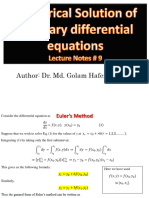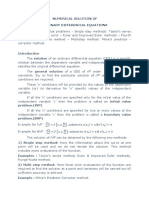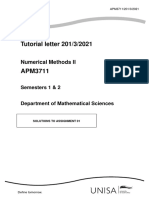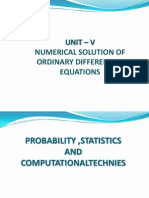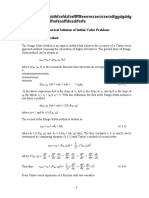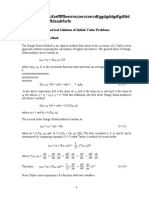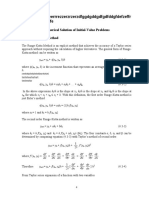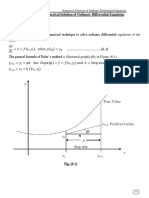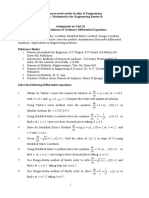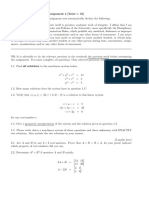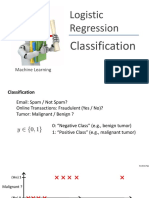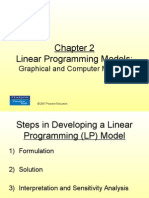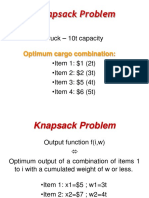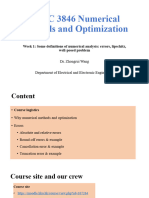0% found this document useful (0 votes)
32 views8 pagesModule 5
The document discusses numerical methods for solving ordinary differential equations (ODEs), focusing on Taylor series, Modified Euler's method, and the Runge-Kutta method. Each method includes a detailed explanation, step-by-step procedures, and example problems with solutions. Applications of these methods in engineering and computer simulations are also highlighted.
Uploaded by
Vasu V E GowdaCopyright
© © All Rights Reserved
We take content rights seriously. If you suspect this is your content, claim it here.
Available Formats
Download as PDF, TXT or read online on Scribd
0% found this document useful (0 votes)
32 views8 pagesModule 5
The document discusses numerical methods for solving ordinary differential equations (ODEs), focusing on Taylor series, Modified Euler's method, and the Runge-Kutta method. Each method includes a detailed explanation, step-by-step procedures, and example problems with solutions. Applications of these methods in engineering and computer simulations are also highlighted.
Uploaded by
Vasu V E GowdaCopyright
© © All Rights Reserved
We take content rights seriously. If you suspect this is your content, claim it here.
Available Formats
Download as PDF, TXT or read online on Scribd
/ 8






